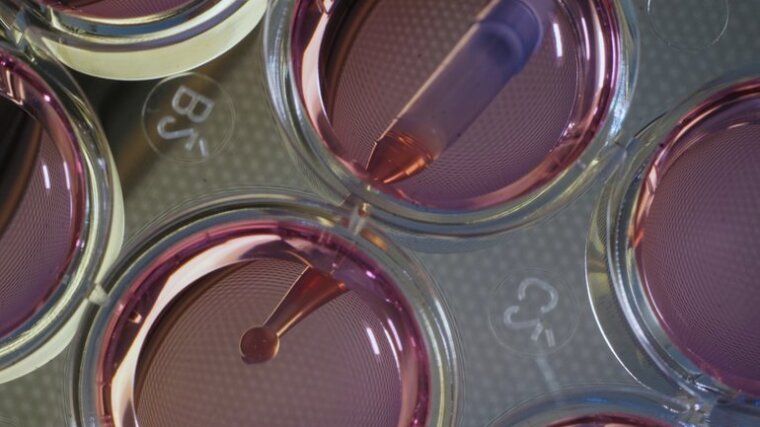
One promising strategy for spatially and temporally selective delivery of active pharmaceutical ingredients (API) is to employ light-responsive nanoscale drug carriers – an approach which except for treating skin is particularly promising in addressing drug release in organs, commonly diagnosed and treated endoscopically, e.g. colon or bladder. A03 addresses this goal via the design of core-shell-corona nanostructures, which are capable to respond to irradiation with red/NIR light in combination with chemical up-conversion by triplet-triplet annihilation and subsequent swelling and release.
During the first funding period, we established polymeric photoacids based on polymerizable naphthols and could show that the corresponding block copolymers undergo self-assembly into photo-responsive and well-defined core-corona micelles. We could further demonstrate that photoacids in general can be activated by chemical upconversion using rare earth-based hybrid nanoparticles and that triplet-triplet annihilation can be achieved within “pure” soft matter, e.g. copolymers carrying noble-metal free sensitizer and annihilator moieties.
The second funding period will research different block copolymer concepts to couple triplet-triplet annihilation upconversion to chemical reactivity for drug delivery and transport. We will shift the irradiation wavelength of the chromophore towards visible light using pyrene-based chromophores and extend the concepts to polymeric photobases – materials which exhibit a significant increase in basicity upon irradiation with light. Furthermore, we will build on the novel polymers that have been developed during the first funding period and study the light-mediated formation of interpolyelectrolyte complexes (IPECs) from polymeric photoacids and photobases. Such materials will be used as light-responsive nanostructures for time-controlled drug release without the need of local irradiation.
In addition, we will embark on light/dark cytotoxicity of such materials in different settings. In this context we will put particular emphasis on investigating the nanoparticulate drug carriers not only in artificial body fluids but utilize the technology available within the CRC to study the polymeric drug carriers within gut-on-a-chip models mimicking colon tissue while allowing access of the sample to optical spectroscopy and hence mechanistic spectroscopy studies. The general concept of light-mediated charge generation will also be exploited to explore temporally and spatially controlled stimulation of lipid bilayer membranes via the activation of photoacid/photobase-containing amphiphiles after embedding. Polymer/amphiphile synthesis and nanoparticle design will be complemented by spectroscopic-mechanistic studies revealing the mechanism of light-controlled reactivity in the targeted block copolymer nanostructures.
Grafik Projekt A03
Graphic: Dietzek/SchacherProf. Dr. Felix H. Schacher
Image: Anne Günther (University of Jena)Prof. Dr. Felix H. Schacher
Laboratory of Organic and Macromolecular Chemistry (IOMC)
Friedrich Schiller University Jena
Humboldtstraße 10
07743 Jena
Phone: +49 3641 9-48250
felix.schacher@uni-jena.de



